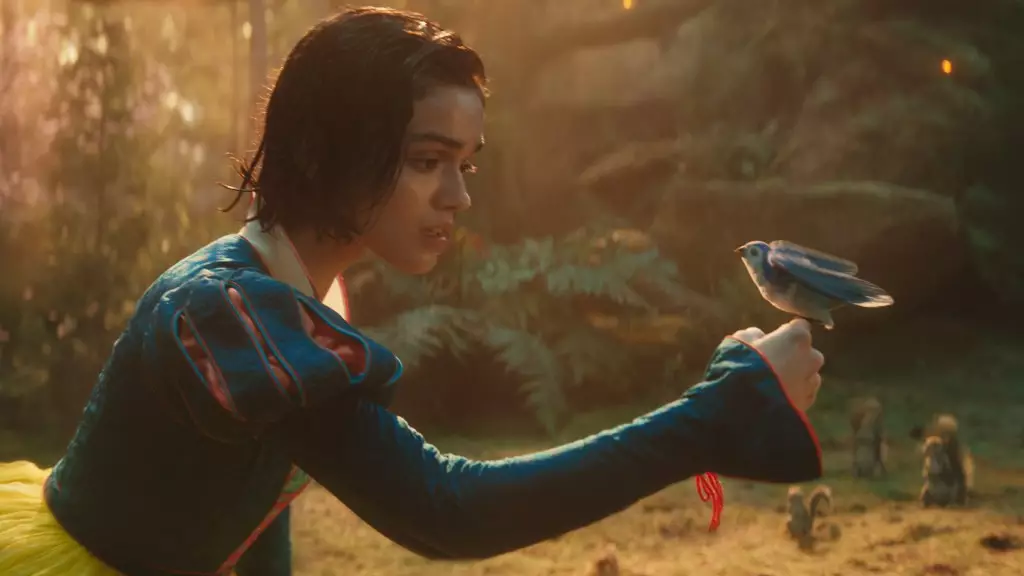Disney’s latest attempt to revive the magic of classic storytelling through its live-action reimagining of “Snow White” has encountered several hurdles that may prove detrimental at the box office. Critics have been merciless in dissecting not only the film itself but the circumstances surrounding its production. The lead character, portrayed by Rachel Zegler, who is of Latina-Polish descent, sparked a media firestorm, igniting discussions on race and casting that overshadowed the film’s promotional materials. Such controversies typically detract from a movie’s appeal, turning public interest into skepticism. Instead of celebrating the rich tapestry of multicultural casting, it has resulted in cynicism and diminished enthusiasm. When are filmmakers going to recognize that storytelling should trump the politics of representation?
The Social Media Backlash
Rachel Zegler’s vocal criticisms of the original animated film compounded these issues. Her remarks seemed to alienate core Disney fans who grew up with the original. By positioning herself against some of the Disney canon, she not only strayed from the path of typically gracious promotion but unintentionally turned the film into a battleground for ideological disputes. While it’s commendable to encourage conversation about evolving depictions in Hollywood, her public squabbles might have inadvertently set the box office trajectory into a nosedive. It raises a critical question: can artists engage in critical discourse without sacrificing the commercial viability of their projects? For a corporation that deals heavily with nostalgia, such self-sabotage feels like an avoidable error.
A Changing Audience Landscape
As the industry adapts to shifting demographics and tastes, Disney finds itself navigating a more inclusive audience. While projections indicate a potential opening weekend gross of $45M-$50M domestically, anticipation also highlights that these viewers, particularly Latino and family audiences, might be drawn in despite controversies. While Zegler may have resonated with younger viewers, it remains uncertain whether this demographic translates to box office revenue. Families often seek wholesome entertainment from Disney, and the baggage accompanying this film could certainly create hesitance. Furthermore, with concurrent releases like Robert De Niro’s “Alto Knights,” competition for a dwindling audience space could further dilute ticket sales.
The Role of Critics and Reviews
The vast void left by unprejudiced critical evaluations of “Snow White” is alarming. Rotten Tomatoes reviews were absent ahead of the film’s release, creating an air of speculation ripe for interpretations that could either skyrocket or plummet the film’s success. In an era where critics play a pivotal role in shaping public opinion, the lack of advanced reviews seems like a missed opportunity for Disney. It enhances the notion that the film’s merits or failings remain open to interpretation, potentially widening the schism between casual viewers and ardent fandom. How can one measure success when the critics’ lenses aren’t readily available to evaluate the film?
Box Office Projections That Spell Trouble
The film industry thrives on expectations and past performances. Drawing from the past, Disney’s “Cinderella” launched with $74M with significant contributions from overseas, while “The Little Mermaid” opened to $68M internationally. Comparatively, with projections for “Snow White” sitting around the $50M mark, the warning signs are undeniable. Historical implications suggest that if “Snow White” cannot muster the fervor of its predecessors, it could signal not just a stunted opening weekend but long-lasting repercussions for future Disney adaptations. If supply chains struggle while demand swells, one can only ponder how the studio will adapt its strategy to remain relevant.
The Broader Implications for Disney’s Future
The stakes have never been higher. Disney’s ambition to transcend traditional storytelling while modernizing classic tales has both its advocates and vocal detractors. However, the intermingling of political discourse with creative expression can lead to fractures rather than bridges. For Disney, grappling with cultural criticisms, while appealing to a growing demographic, requires a delicate balancing act. As the opening weekend approaches and the world watches, one cannot help but wonder if this exhilarating endeavor will be remembered as a significant leap forward or a cautionary tale of miscalculation.
It’s essential that Disney recognizes the risk inherent in its blurred line between nostalgia and reimagining, as the brand wrestles with its identity amid necessary but contentious discussions about representation, artistry, and commercial success.

